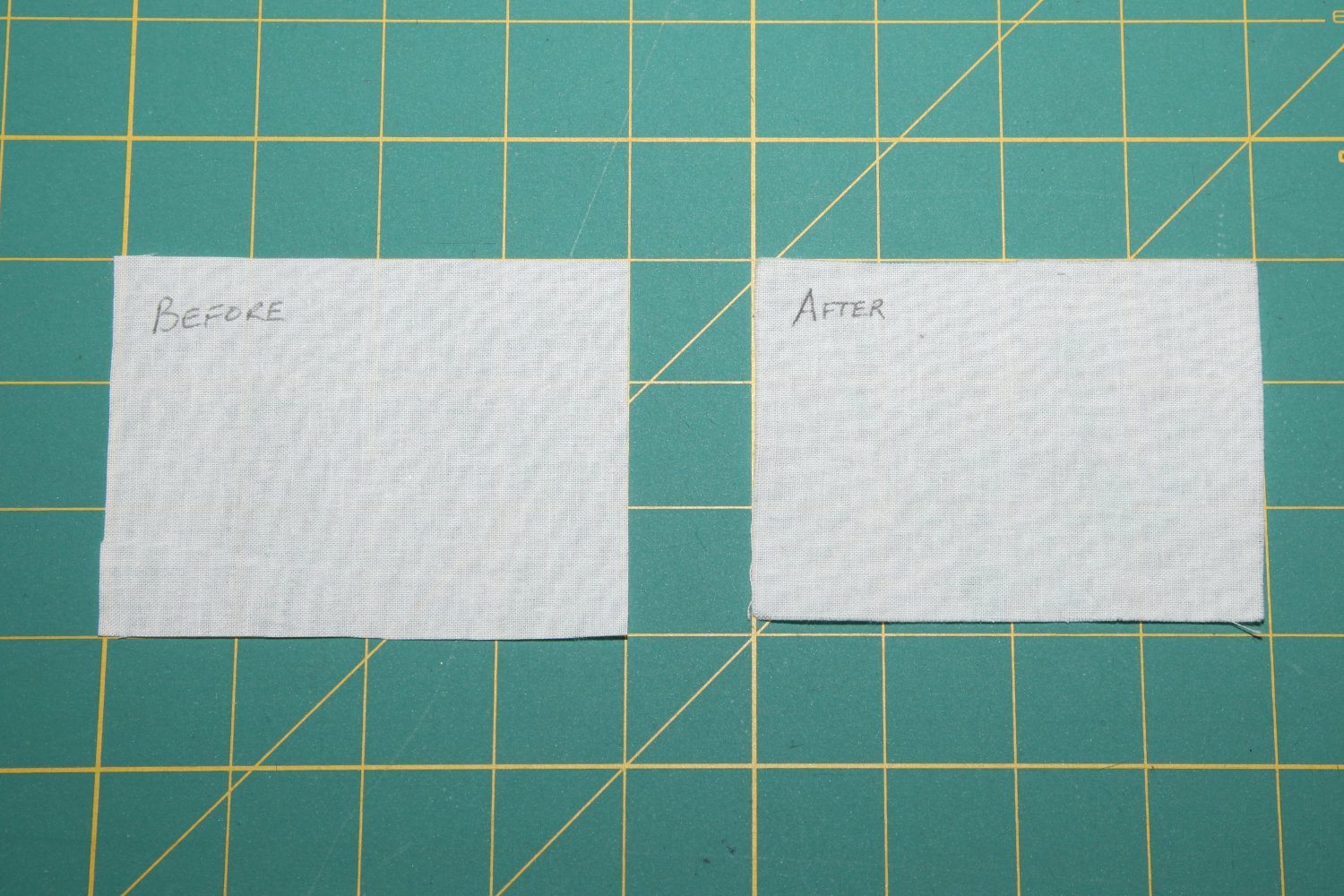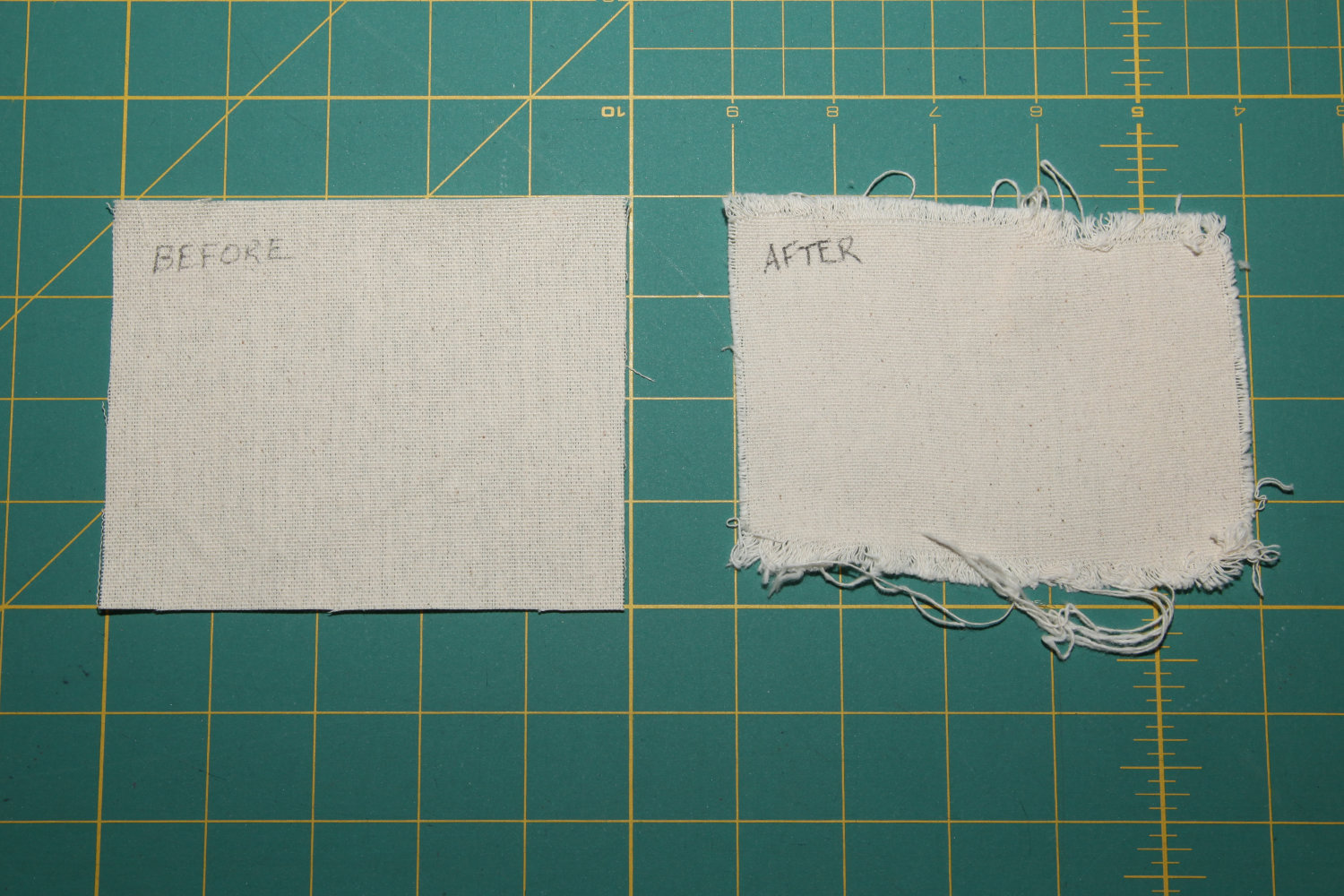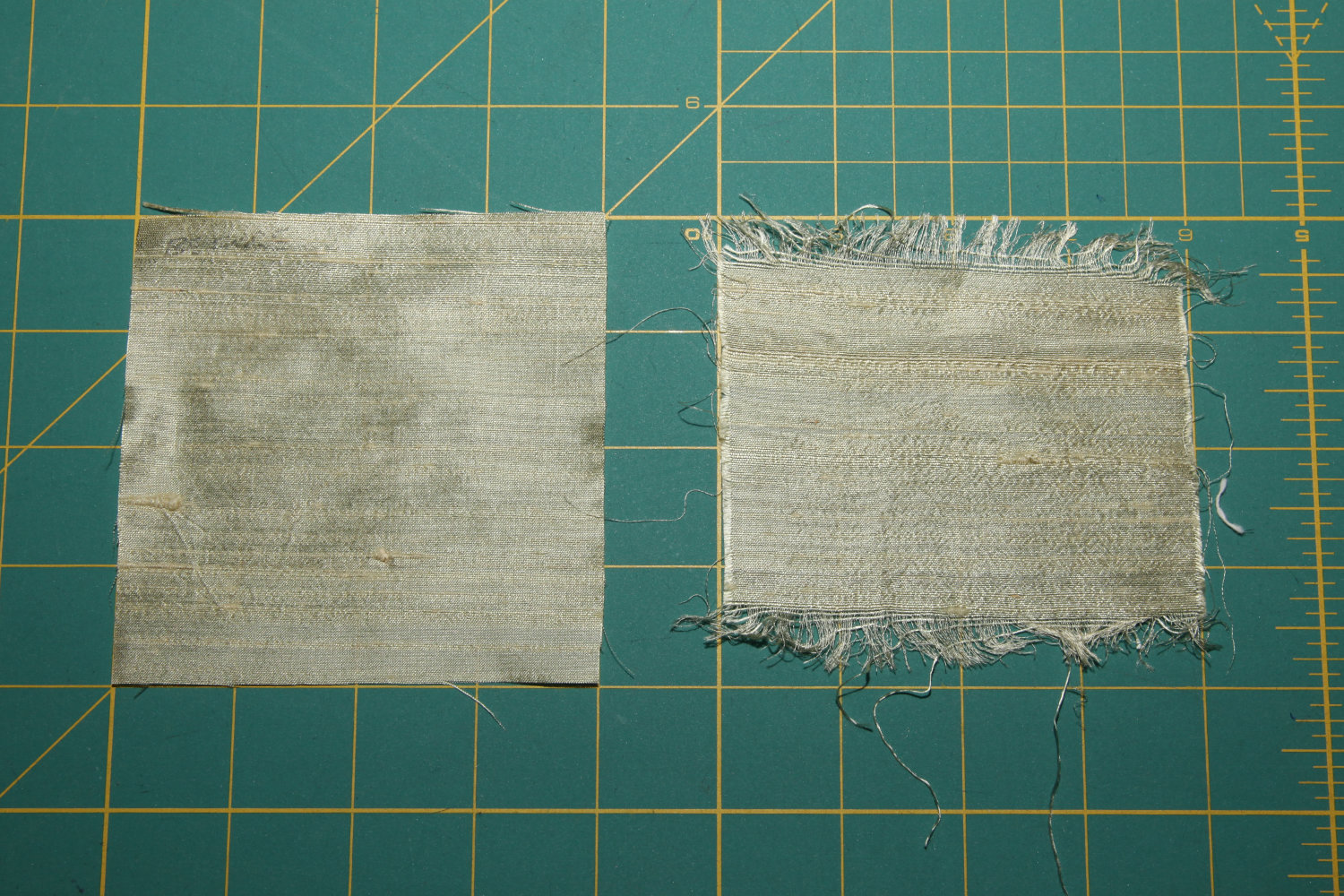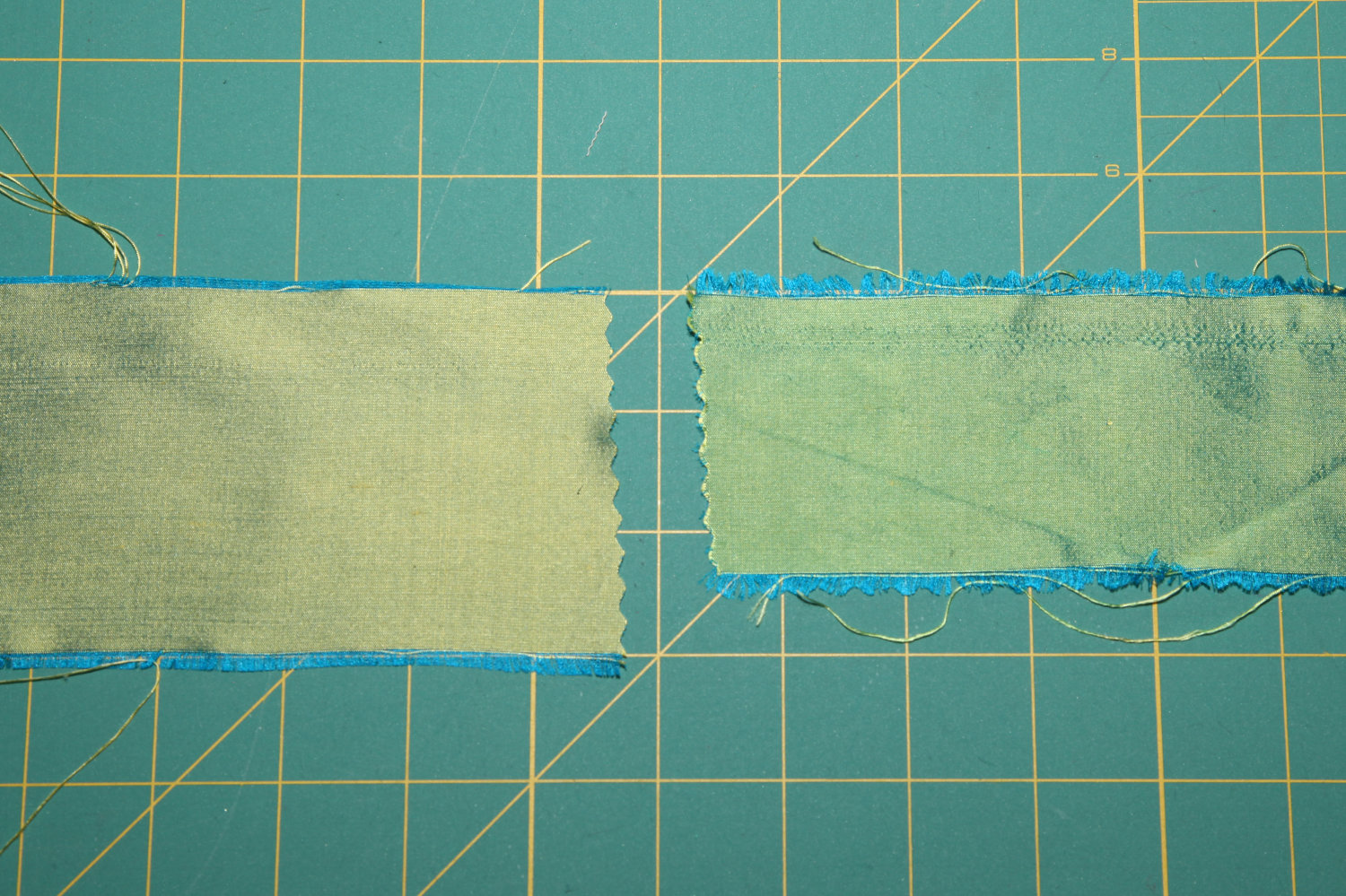Recently I was browsing around on the interwebs, and I ran into a question regarding pre-washing fabric.
The question was along the lines of “Why should I pre-wash my fabric before sewing something with it?”
On the surface, that looks like a straight-forward question. But the answer isn’t.
So, let’s take a peek at this from the “to be or not to be” standpoint. To pre-wash, or not to pre-wash. THAT is the question.
There are many VERY GOOD reasons to pre-wash your fabric. And, there are some equally compelling reasons NOT to pre-wash your fabric.
I’m gonna be honest. When I think of pre-wash, my brain waivers between washing and just pre-treating fabric. I’ll explain more below, but for now, when I say “pre-wash”, I mean wash, with water and some detergent, either by hand or in a machine, and the accompanying drying that would come with having submerged your fabric in water.
Reasons to Pre-Wash Fabric
As I mentioned above, there are some really good reasons to prewash your fabric. The reasons listed below are in no particular order, and may not even be comprehensive.
Fabric has Sizing (and other stuff) added in manufacturing
When fabric is manufactured, it is often treated with stuff. All this stuff (Sizing is just one of the things that could be on the fabric, it could be dye, and other stuff), is on the fabric and well, it can be irritating to the skin.
Also, if you plan on making a garment or anything really that will be washed in it’s normal every day life, you’ll want to know how that fabric will behave. Both in the washer and out of it.
It’s always good to know how that fabric will behave in the garment you are making. Sizing is like starch. It makes the fabric stiffer. So, once washed and the sizing is removed, the fabric might have more drape or hand differently. It’s good to know.
Also, if you’ve ever washed something white with something bright pink or red, you know the effects of dye in the laundry. Your used-to-be white whatever is now pink. But red isn’t the only color that can … color your output. Black can make white look dingy or even gray.
And never assume that a fabric that is printed at the manufacture with both black and white won’t bleed onto itself. Sad, but true. Better to know before you spend HOURS making something only to have it ruined in the first wash.
Shrinkage
Speaking of ruining something in the first wash. Many fabrics are susceptible to shrinkage. Yes, even pre-treated ones. And I wouldn’t bet my hours of project time on synthetics are immune to shrinkage either.
So, it’s always good to work with the fabric after it’s been washed so that you are working with the “final dimension” of the fabric. That way, you won’t make an awesome pair of pants that end up as high-waters.
Shrinkage is often measured in percent. So, the longer the garment is, the more inches you can expect to come off.
And due to the nature of the weaves or knits and fibers and such, you may find that cross-wise shrinkage is different than length-wise.
You can tell if something shrinks in the wash by washing a swatch of it. Simply cut a small corner off with known dimensions. Say, 2 inches by 3 or 4 inches. Then, wash it and re-measure. You do want to use something big enough to SEE the difference. if you only cut a centimeter by centimeter, you may not be able to tell the difference if the shrinkage is only 10% (or 1 millimeter). It could get that much smaller just from fraying or unraveling.


Fabric Fondling
If you like to sew. And you like fabric. You might be prone to fondling fabric at the store.
You can be pretty certain that you aren’t the only one.
I’m not a germaphobe. But, I do like the idea of washing … stuff… off the fabric. Store dust, other people’s finger oils.
And one person related a story about watching a child sneeze and use the hanging fabric off the bolt as a hand towel. Gross.
So, you know, you don’t really know what all you’re bringing home from the store. And this holds true for internet fabric.
Reasons to Avoid Pre-washing your fabric
So, there are really good reasons to pre-wash your fabric. However, there can be a few compelling reasons to avoid it.
Some Fabric isn’t washable.
What?!? no!
Yes.
Some fabric is “dry-clean only”.
Gah!
Yeah, so some of the “dry-clean only” fabric can actually be washed. And you’ll be JUST fine. However, it’s best to test. Some fabrics completely change their appearance. And you might not be OK with that.
For example, moire taffeta might lose its Moire.
Silk Dupioni completely loses it’s crisp shiny appearance and transforms into a super soft and drapey fabric that has even more texture.
Velvet might look crushed when it wasn’t supposed to be.


You will never ever ever (ever) need to wash the finished product.
Or, if you do, it won’t matter.
Potholders, aprons… might not matter if they shrink.
Drapery? Maybe you’ll never need to wash it. (personally, I only make drapery that I can wash. or at least… dry clean)
Upholstery and pillows – maybe you won’t need to wash these either. Though, I do highly recommend testing a swatch for color-fastness and texture changes in the event you have to spot clean it.
How to Decide – To Pre-Wash, or NOT to Pre-Wash
That is the question.
Here are some things to keep in mind.
Pre-Treat your fabric in the exact way you will treat your fabric in its final state.
If you want to make a washable garment, Pre-wash your fabric.
If you want to only take it to the dry cleaners. Take your fabric to the dry cleaners (Or better yet, get those in-dryer sheets and save yourself the time and money).
If you think you’ll only ever spray your finished article with a vinegar mixture, febreeze, or benefect, then pretreat your fabric that way.
If you will only steam your drapery, steam your fabric.
It’s the ONLY way to know how the fabric will behave.
If you bought 1000 yards of something. You can always test a swatch.
Better yet. Buy a swatch and test it THEN buy your 1000 yards of fabric.
(and no, i haven’t bought 1000 yards of anything….30, yes. For drapery, but even I haven’t bought 100 yards in one purchase – of the same fabric. Don’t judge)
Always test a swatch if you’re going to wash it or get it wet.
This will tell you how the fibers of the fabric will behave. Will the texture change. Will it shrink?
A small enough swatch won’t let you know if it’ll bleed or not. But you could toss in a white sock to check. lol. An unimportant sock. Just in case.
Even if you aren’t going to wash the final thing, you can use the swatch test method on your preferred treatment method.
This is also good if you are applying some chemical or anything to your fabric. Also good to test a swatch with your iron if you haven’t used that fabric before.
Know Thyself
So, when I make garments, I don’t sew cleaning instruction tags into them.
And, honestly, even if there are washing instructions, there’s a good chance I will ignore it.
Which means, for me, most likely I’m going to wash my garments.
So, unless I know for a fact I’ll never wash something, probably I should just wash it before I make it.
I’m still making mistakes. LIke washing my wool trousers. (They are now shorter than the lining I put in them. 🤣 Talk about looking homemade.)
So, when buying fabric make sure you know the recommended cleaning method. If you don’t trust yourself to dry clean stuff, steer clear from dry-clean only fabrics. (Or, buy them and pre-wash that swatch and see if you can live with the difference.)
Another note. If you are goign to make a garment with a lining. And that lining is washable, go ahead and pre-wash the lining even if you’ll only ever dry-clean it in the future. At least you’ll get all that nastiness (see above) off the fabric before you wear it.
Share your story
I think pre-washing is important. But more than that, it’s important to treat your fabric in the same way you plan to treat your final product (garment). But it’s always good to test it first.
And if you are grossed out by boogers and dust, then by all means at least pre-treat in some way involving heat.
Let me know your stories of fabric failures and pre-wash problems. 😂
Learn to sew. Go at your own pace. Learn helpful techniques and tips to make sewing more enjoyable.
